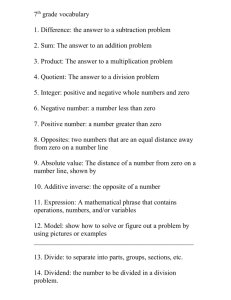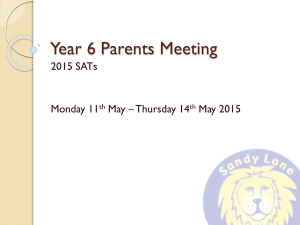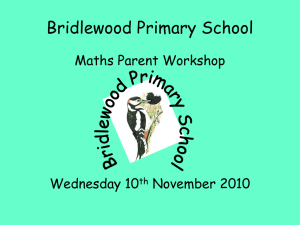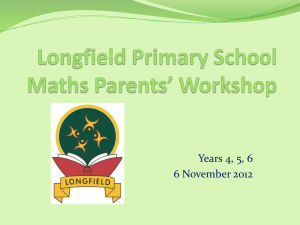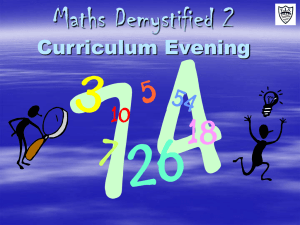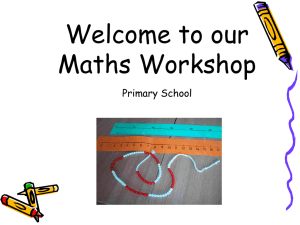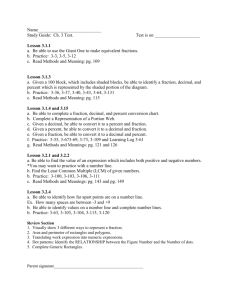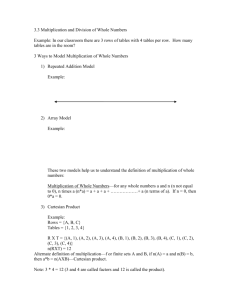Maths Unit 12 Information
advertisement
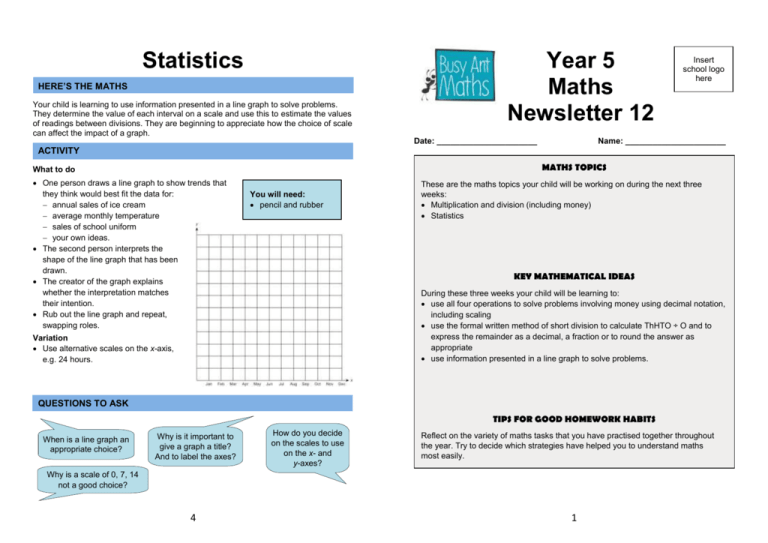
Statistics HERE’S THE MATHS Your child is learning to use information presented in a line graph to solve problems. They determine the value of each interval on a scale and use this to estimate the values of readings between divisions. They are beginning to appreciate how the choice of scale can affect the impact of a graph. Year 5 Maths Newsletter 12 Date: ______________________ Insert school logo here Name: ______________________ ACTIVITY MATHS TOPICS What to do One person draws a line graph to show trends that they think would best fit the data for: annual sales of ice cream average monthly temperature sales of school uniform your own ideas. The second person interprets the shape of the line graph that has been drawn. The creator of the graph explains whether the interpretation matches their intention. Rub out the line graph and repeat, swapping roles. You will need: pencil and rubber These are the maths topics your child will be working on during the next three weeks: Multiplication and division (including money) Statistics KEY MATHEMATICAL IDEAS During these three weeks your child will be learning to: use all four operations to solve problems involving money using decimal notation, including scaling use the formal written method of short division to calculate ThHTO ÷ O and to express the remainder as a decimal, a fraction or to round the answer as appropriate use information presented in a line graph to solve problems. Variation Use alternative scales on the x-axis, e.g. 24 hours. QUESTIONS TO ASK TIPS FOR GOOD HOMEWORK HABITS When is a line graph an appropriate choice? Why is it important to give a graph a title? And to label the axes? How do you decide on the scales to use on the x- and y-axes? Reflect on the variety of maths tasks that you have practised together throughout the year. Try to decide which strategies have helped you to understand maths most easily. Why is a scale of 0, 7, 14 not a good choice? 4 1 Multiplication and division (including money) HERE’S THE MATHS Your child is learning to use all four operations to solve problems, involving money problems and decimal notation. ACTIVITY Multiplication and division HERE’S THE MATHS The focus this week is on using all four operations to solve problems including money and to express the remainder as a decimal, a fraction or to round the answer as appropriate. A decimal answer is usually required for money calculations. A fraction is appropriate when objects such as pizzas or bars of chocolate are being shared. Rounding is necessary for questions such as how many full coaches are there (round down) or how many coaches are required to take everyone (round up – the final coach will be part-full). ACTIVITY £345 Mountain bike £167 £429 Quad bike Scooter A 5643 3033 1257 2345 Choose one 1089 6541 4201 8733 ÷4 ÷5 ÷2 B £505 Folding bike £148 BMX bike £299 Dirt bike What to do You will need: Use the information above to write two problems for pencil and paper each other to solve. calculator Try to use two or more different operations in each one, using all four operations (addition, subtraction, multiplication and division) at least once. For example, how much change will there be from £1000 if you buy 3 dirt bikes (multiplication and subtraction)? A generous grandmother bought quad bikes for her two grandsons. She had planned to spend £1000 so she shared the change between the two boys. How much did each boy receive (multiplication, subtraction and division)? Discuss your questions, looking at the operations involved and the strategies used, and check the answers with a calculator. QUESTIONS TO ASK Estimate the answer to 137 × 78 by rounding. What is £98.70 ÷ 10? 2 Count backwards in 60s from 480 to zero. Choose one You will need: pencil and paper What to do Choose one number from A to divide and a divisor from B. Calculate the answer and express the remainder as a fraction and a decimal. Work together to turn the calculations into three different problems where: the remainder is best expressed as a fraction the remainder is best expressed as a decimal. Repeat with new number choices. Variation Work together to turn the calculations into problems where the remainder has to be rounded up or down. QUESTIONS TO ASK What happens to a number when you divide by 10 (100)? Jumbo sweet packets contain 250 sweets. You have 3200 sweets. How many full packets? What is 1089 ÷ 10 (100)? Cruise ships carry 500 passengers. How many ships will be needed for 2300 people? A theatre has made £4000 ticket sales. A ticket costs £20. How many tickets were sold? 3
